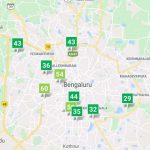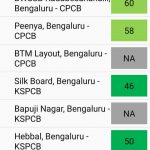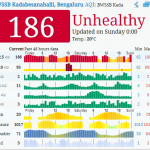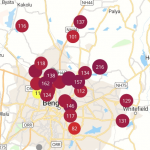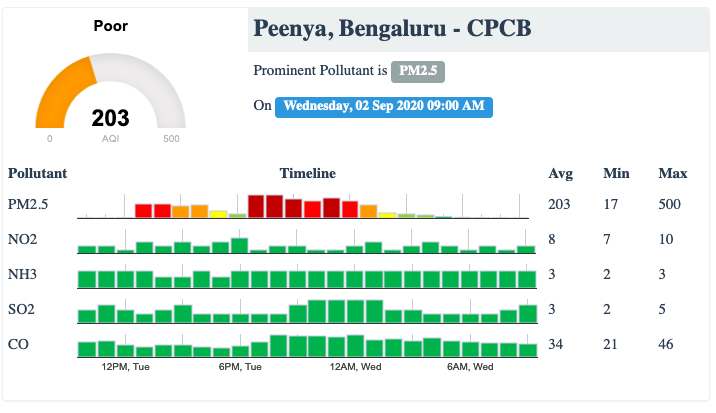
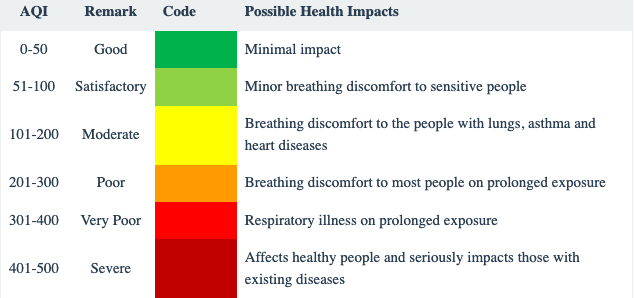
By Qamar ZJ
The pollution loads, be it Particulate Matter 2.5 or PM 10, are steadily rising in August and September compared to the relatively healthier readings in April and May. This result is uniform across all the areas where the air pollution is being monitored in the city. While some areas suffer from PM10, others are largely PM2.5. While the pandemic began around November in China, it only became a serious issue in India in March. The pre-Covid and post-Covid scene has resulted in a steady rise in air pollution, according to statistics from the Central Pollution Control Board. This is in contrast to the 28% reduction in air pollution during the lockdown.
The Silk Board, considered one of the most heavily polluted junctions in the city, is becoming unhealthier by the day. The air pollution that was only ‘moderate’ or ‘satisfactory’ throughout the month of January, February and March, began to record ‘good’ readings in half the month of April, went up to ‘satisfactory’ levels in May and June, and became largely ‘good’ again in July. However, in August, it recorded more ‘satisfactory’ readings than ‘good’. In September, it’s a cross between ‘satisfactory’ and ‘good’ in equal measure so far.
The City Railway Station, another pollution hotspot in Majestic, that recorded ‘moderate’ levels of pollution from January saw a dip in pollution to ‘satisfactory’ levels in May, and even had days with ‘good’ readings in June and July. In August, it went back to being ‘satisfactory’ with six days of ‘good’ readings. In September, it’s gone back to ‘moderate’ levels so far. This is a clear case of the situation coming full circle as the station area’s pollution loads have gone back to the pre-Covid era.
Another prominent hotspot is the industrial area of Peenya. The area that showed ‘satisfactory’ levels of pollution from January became healthier in June with more days being ‘good’ than ‘satisfactory’. This trend became more pronounced in July and August. In September, the result is a mix of ‘moderate’, ‘satisfactory’ and ‘good’ readings, clearly indicating that the pollution is back on the rise.
In Marathahalli and Bellandur, the pollution is rising, falling, and rising again. From January to March, the air pollution levels were at ‘moderate’ levels. In April, half the month showed a dramatic shift towards a ‘good’ reading. The trend has continued ever since, implying that the IT crowd in these parts is staying away from the roads and working from home, or using the road only for essential trips.
PM10 and PM2.5
While Silk Board, City Railway Station, and Hebbal have recorded far higher PM10 pollutants, localities like BTM Layout, Peenya, and Hombegowda Nagar have recorded more PM2.5 levels. The PM2.5 loads are far more harmful to the lungs, particularly to those with breathing issues, and young children.
Lesser when it rains
The pollution is relatively lesser when it rains as it removes the pollutants from the air. However, pollution is the highest during winter when there are no rains. This is due to garbage burning, construction dust, vehicular pollution, and burning of solid fuels for heating.
The city has recorded quite a number of flip-flops in the last two years. In November 2018, air pollution had gone up by 42% in one year. In March 2020, we had reported that Silk Board had the lowest pollution while Hombegowda Nagar near NIMHANS was the most polluted in the city.

